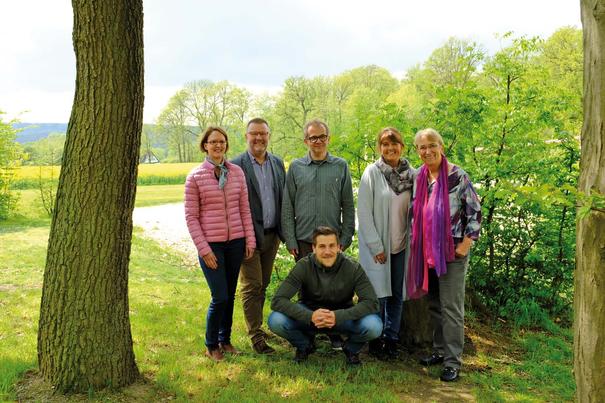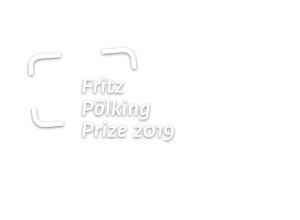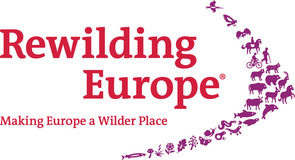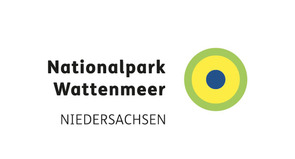The jury's comment: "From image to symbol"
by Willi Rolfes
This award is conferred in honour and memory of Fritz Pölking, founder and honorary member of today's Society of Nature Photography (GDT). It honours his undeniably fantastic photographic work, but above all his efforts to fill people with enthusiasm for nature and photography. His textbooks and workshops, the publication of magazines and books, his blog and numerous articles all aimed at increasing knowledge by sharing it. Those of you who met Fritz Pölking know that his gaze was always on the future; he was restlessly looking for technical innovations and new methods for nature photography, which he also developed und published himself. With even greater fervour, he searched for photographic expression. The continuous development of pictorial language, the differentiating of photographic positions and their meaning for the genre of nature photography were his life-long companions. Communication and exchange were key to him, and he was an important and supportive influence for many young fellow photographers.

from left: Stefanie Tecklenborg, Willi Rolfes, Marc Hesse, Marion Vollborn, Gisela Pölking, Radomir Jakubowski
He was certainly no dogmatist. Many of you might remember him saying: "It is easy to become a good nature photographer; all you need is this: the workmanship of a specialist photographer, the creative power of an artist, the curiosity of a journalist, the instinct of a hunter, the obsession and persistence of a scientist and the love of an environmentalist for all the creatures." Here, Fritz Pölking demonstrates the diversity of nature photography's action field and reveals that this variety is nature photography's true power. This is how it can serve numerous functions, such as nature studies, environmental protection, documentation and advocacy, education and artistic analysis. These are, by the way, the essential points of the GDT's statutes. Fritz Pölking was an incentive and inspiration to many. And this is precisely the competition's intention, too
When we as the jury of the 2019 competition ask for quality of a photographic portfolio, we are not talking into an empty space. Our time sees a flood of images. Serious photographers provide high-quality pictures, every place in the world has been visited and may be booked as part of a workshop. Instagram alone has an upload of more than 40 billion images, and every day 80 million photographs are shared. With the number of pictures, the garbage mountain of meaningless pixels grows, and the viewer tires. A friend dreams of an exhibition in a large museum with just one picture and a bench in front of it, where only one visitor at a time is allowed to take a seat. Others delete their social media accounts because they can no longer stand the importunity and triteness.
We received a hint for our evaluation of the competition entries from considering the history of art. When the important schools of painting had helped the whole world to paint good portraits and still lifes, and in addition photography was being invented, the question arose about the position and purpose of painting in the future.
Caspar David Friedrich, the great painter of Romanticism, gave an important clue: "The painter should paint not only what he has in front of him, but also what he sees inside himself. If he sees nothing within, then he should stop painting what is in front of him. Otherwise his paintings will be like a folding screen, behind which one expects nothing but death and disease.”
This plea points us to the necessity to create "inner pictures". Personal viewpoints. Individual moods. Authentic questions. On another occasion, Friedrich speaks of “soulless pictures”. Is there a better way to describe present times? But how do you create "inner pictures"? The painter gives another clue: "Close your bodily eye, that you may see your picture first with the eye of the spirit. Then bring to light what you have seen in the darkness, that its effect may work back, from without to within."
Such a piece of work is unique, honest and very personal. It survives in the flood of pictures, because it is more than just an image. Such a photograph is a powerful symbol. This is the kind of quality we were looking for when judging the competition, and we found it in the photographs by Stephan Amm (Fritz Pölking Prize) and Thomas Hempelmann (Fritz Pölking Junior Prize). The great romanticist stated: "Any picture is more or less a character study of its creator."
With four random samples from the work of Stephan Amm and Thomas Hempelmann, I would like to explain our decision.
The subjects of the photograph First light by Stephan Amm are frosted oak leaves on shadowy ground on a winter's morning. The soft blueish light hints at the cold. Where the light reaches the ground, the hoarfrost recedes, and the leaf appears in warm autumn colours. This seems to describe the picture well – but we have not yet mentioned its symbolic power that speaks to us in pairs of meaning: cold and warmth, blue and orange, light and shadow. The oak leaves lie on the ground, dead, no life in them anymore. The dull light underpins the morbid atmosphere. But a beam of light makes all the difference. Where warmth and light penetrate, the situation changes. That deadening frost vanishes, and a leaf shines in a dignified light. An enlightening thought, a word well spoken, brave resistance or a comforting embrace illuminate the world and change the game. It is an encouraging picture. A reflection of the world turns into a reflection about it.
Stephan Amm's photograph Heart shows an almost heart-shaped block of ice in the running water of a stream. The ice has a rough surface, and it seems it has found momentarily support in the water's current. It appears in a glowing light grey; the stream's colours, on the other hand, are dark, almost threatening. In this picture, two levels of meaning resonate, invisible yet obvious: a "heart of ice" and the "flow of time". This photograph reminds us of the phrase panta rhei, or in other words: "You could not step twice into the same river.". Heraclitus' flux theory states: Everything flows, and nothing stays; there is only eternal becoming and changing. What would make a heart of ice melt? Time. A reflection of the world turns into a reflection about it.
The photograph Shadow play by Thomas Hempelmann shows a seagull sitting on a railing, its shadow on a white surface behind it. But this piece of work is more than an image. It employs a world of symbols. The light body of the bird shows the "bright side" und the silhouette of the head the "dark side" of the same bird. Like yin and yang, only together they are whole. This picture has a reference quality, reminding us that we carry brightness and darkness within us; only when we accept both and fuse them will we be a whole person. A reflection of the world turns into a reflection about it.
The photograph Fast lane by Thomas Hempelmann shows two tracks in the snow. The left one was obviously left by a bird discovering the space step by step. Next to it, on the right side, a human track. The tyre tread indicates that a bicycle had been ridden parallel to the bird's track. On first sight, we encounter a photograph that reduces an everyday situation to its graphic dimension – a well-made play of shapes. When we now follow the advice by Caspar David Friedrich and close our "bodily eye" to see with the "eye of the spirit", we will discover at least one more dimension in this work. It questions the way we go about exploring time and space. The bird walks, step by step. The human, on the other hand, has gathered speed, using a bicycle. The gradual disclosure of the world gives way to continuous, incessantly accelerated locomotion. Humans use the "fast lane", as the title states. From this perspective, the image of an everyday situation turns into a symbol for us humans today. It raises questions about our relationship with nature and our rhythm of life. Questions that concern every one of us – this photograph points us to them. A reflection of the world turns into a reflection about it.
Stephan Amm and Thomas Hempelmann are worthy awardees because they invite us to use their portfolios to reflect on issues of our time and life in general. They are brave enough to work on a very personal basis, and they dare to cast an eye inside. This way of working has force and future.
Fritz Pölking would be delighted!










